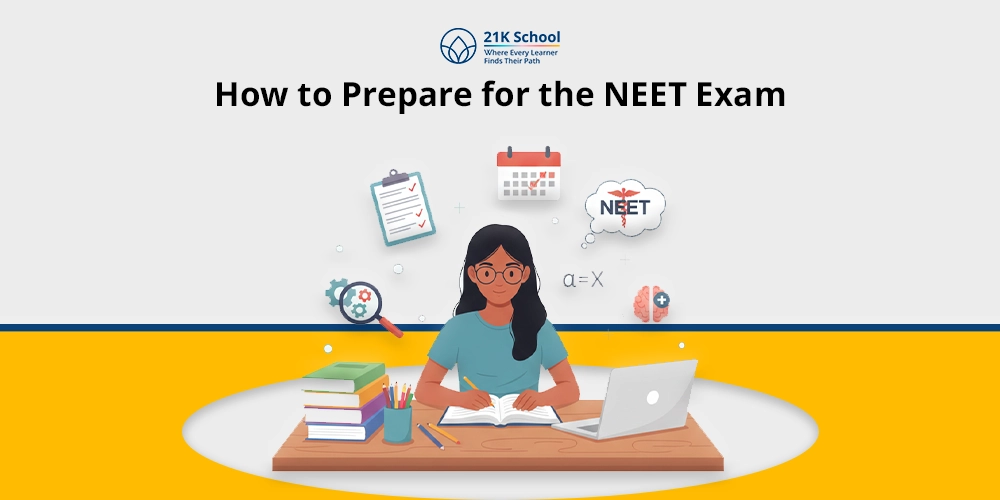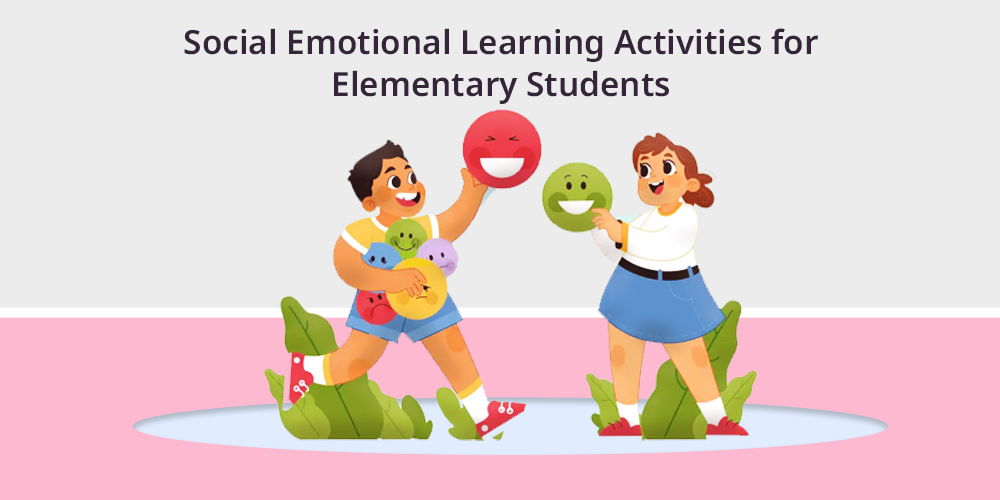
The educational method of Social Emotional Learning (SEL) teaches children to recognize feelings, create good relationships, and make suitable decisions.
The growing understanding of mental health in elementary schools has made Social Emotional Learning an essential element in their curriculum.
The implementation of Social Emotional Learning techniques in children helps them handle their emotions and teaches them to interact properly. Students also learn to control their behavior.
It creates positive life outcomes for both academic excellence and healthy interpersonal bonds.
This article discusses the definition of SEL while explaining its essential value to elementary students. Read on to get through several interesting practices for skill development support.
Contents
What is SEL: A Holistic Approach
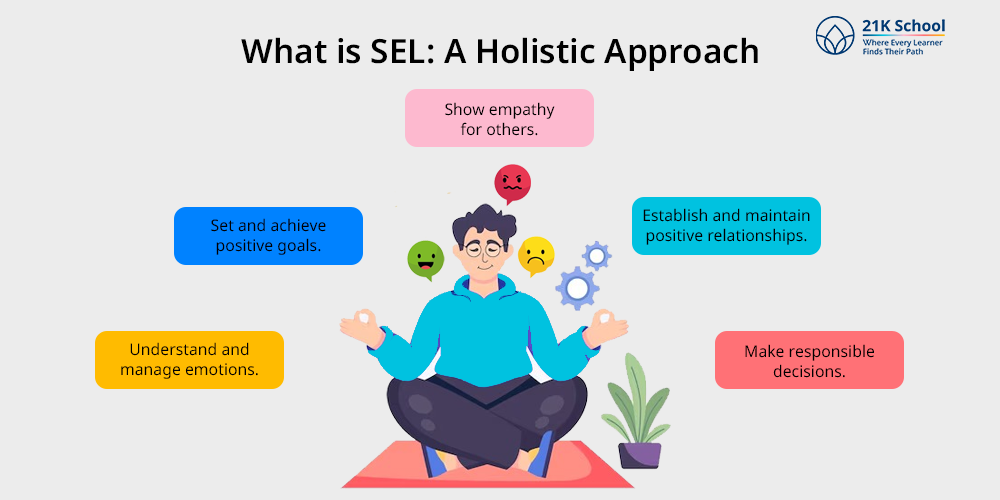
Social Emotional Learning (SEL) is the process of learning and using attitudes, information, and abilities to comprehend and control emotions.
Additionally, it promotes goal-setting, empathy, relationship building, and responsible decision-making. The Collaborative for Academic Social and Emotional Learning (CASEL) describes Social Emotional Learning (SEL) as a developmental process.
It enables people to learn and use knowledge about emotions skills and attitudes to achieve the following outcomes:
- Understand and manage emotions.
- Set and achieve positive goals.
- Show empathy for others.
- Establish and maintain positive relationships.
- Make responsible decisions.
The educational approach of SEL understands that emotional and social growth equates to the importance of intellectual development for success.
The social emotional learning framework gives students important capabilities which help them tackle obstacles effectively.
It also lets them develop productive relationships with others while making socially beneficial contributions to their community.
The benefits of social learning are prominent and with a strict focus on these, overall learner development is ensured.
Importance of SEL in Elementary Kids
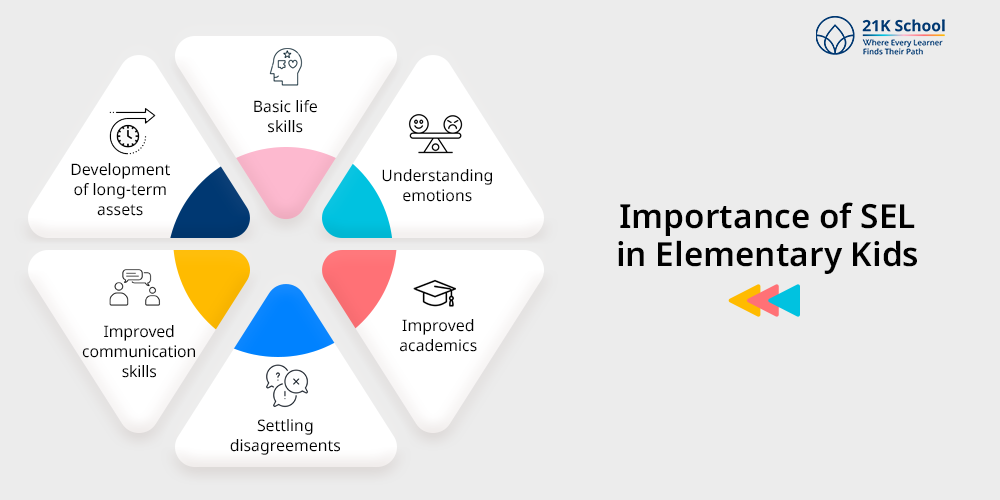
SEL holds essential value during times of vital emotional and social development in elementary school years.
The integration of SEL demonstrates proven results which boost academic success, behavioral conduct as well as social ability development.
- Basic life skills:
SEL provides children basic life skills like resilience, self-awareness, self-management, responsive decision-making, and empathy leading to their long-term development.
- Understanding emotions:
SEL education helps students understand their emotions thus leading them to reduce their experiences of depression, anxiety, and stress.
- Improved academics:
Children who learn to manage their emotions together with behavior respond better to learning. This results in better academic achievements.
- Settling disagreements:
Children who learn SEL develop effective methods for settling disagreements peacefully.
- Improved communication skills:
SEL helps students develop empathetic understanding combined with excellent communication skills which leads to enhanced peer relationships.
- Development of long-term assets:
SEL skills develop into long-term successful assets for students. This is because they predict their academic achievements, professional growth, and individual fulfillment.
Also read: Benefits of social emotional learning
12 Light-Hearted Projects for Integrating Elementary Social Emotional Learning
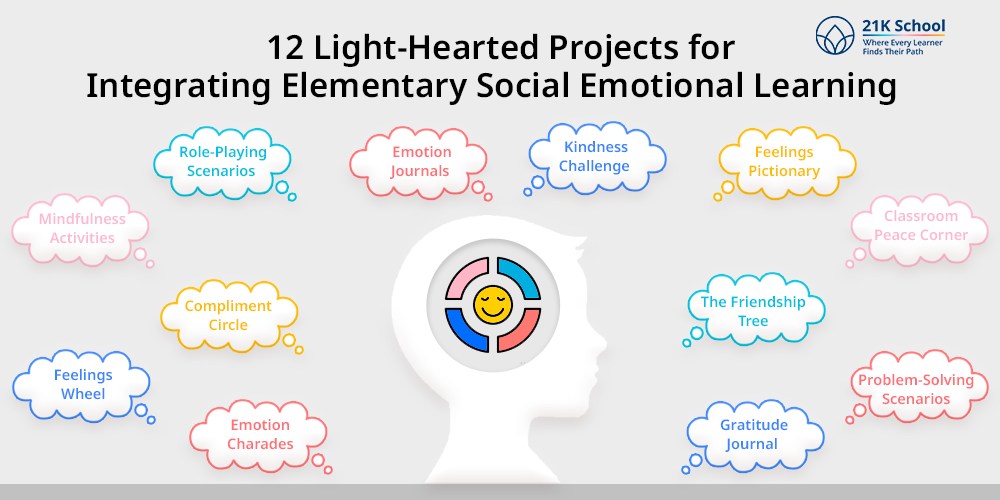
SEL instruction in the classroom presents multiple engaging strategies for students beyond dull learning experiences.
The benefits of social learning activities often prove to be the most fulfilling components which bring daily enjoyment to children.
The following are twelve amusing activities which support elementary school students’ SEL development:
1. Emotion Charades
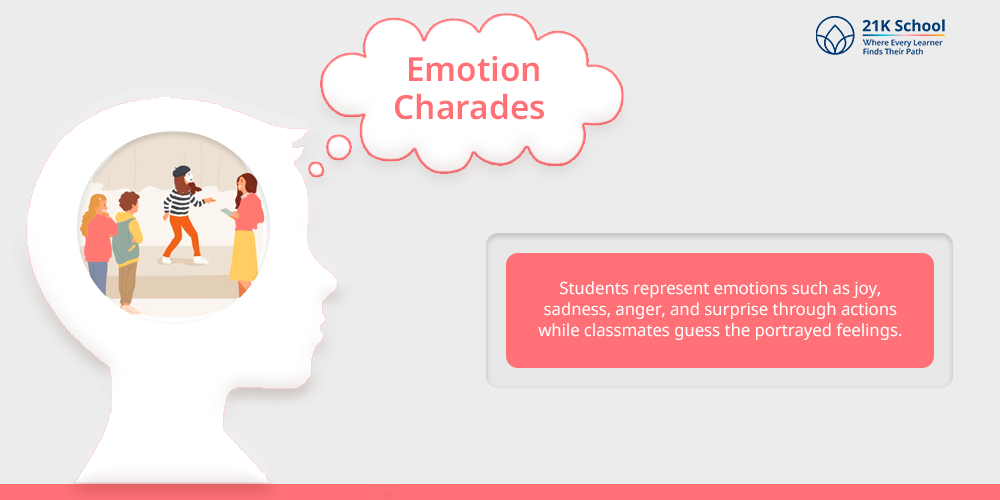
Children strengthen their emotional intelligence through this traditional game.
Students represent emotions such as joy, sadness, anger, and surprise through actions while classmates guess the portrayed feelings.
This game promotes improved emotional recognition together with personal empathy skills.
- Materials Needed: Emotion flash cards (preferably with faces of some of the favourite cartoons that kids watch). A bowl to keep cards. Some chocolates or small gifts for winners.
- How to Do: Pick a flash card without reading the emotion aloud. Then, act out the emotion. Let others guess the emotion. The one giving the right answer is the winner. Now, rotate the turns around.so that each one gets a chance.
- Tips: Use pictorial aids for younger children. Start from basic emotions. Encourage personal touch to expression and understanding of emotions. Discuss how that emotion makes them feel after each round.
2. Feelings Wheel
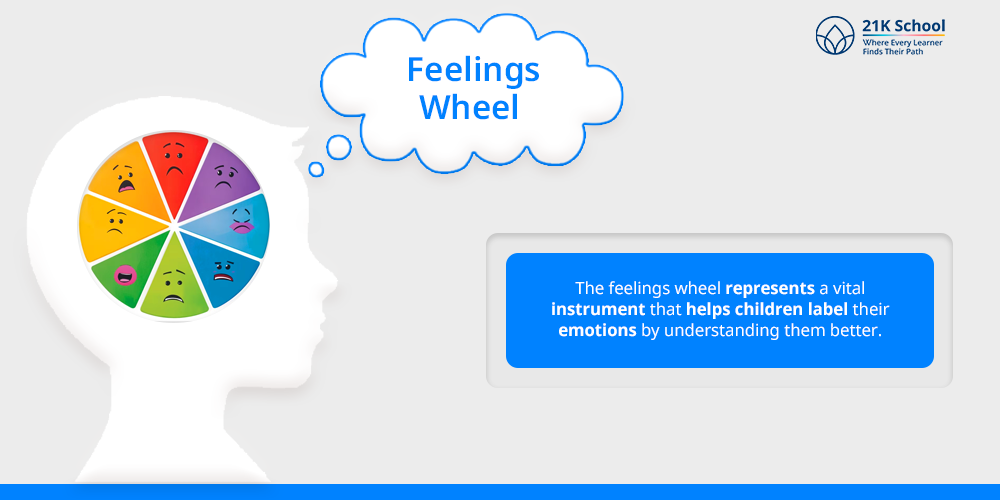
The feelings wheel represents a vital instrument that helps children label their emotions by understanding them better.
Children use the wheel as a tool to share their feelings either while discussing in class or mediating conflicts.
Through this type of interaction students acquire both emotional language skills and improved self-understanding.
- Materials Needed: Printed or hand-made feelings wheel. Pointer (may be a stick). A long stick to hang the feelings wheel. Tapes, paperclips,etc.
- How to Do: Children come up one-by-one and spin the wheel. The chosen emotion is expressed through a story from a student’s life. The emotion is further discussed and understood better in the class.
- Tips: Use bright colours for the feelings wheel to increase engagement of kids. Also, add complex emotions on the wheel depending on the age of students.
3. Compliment Circle
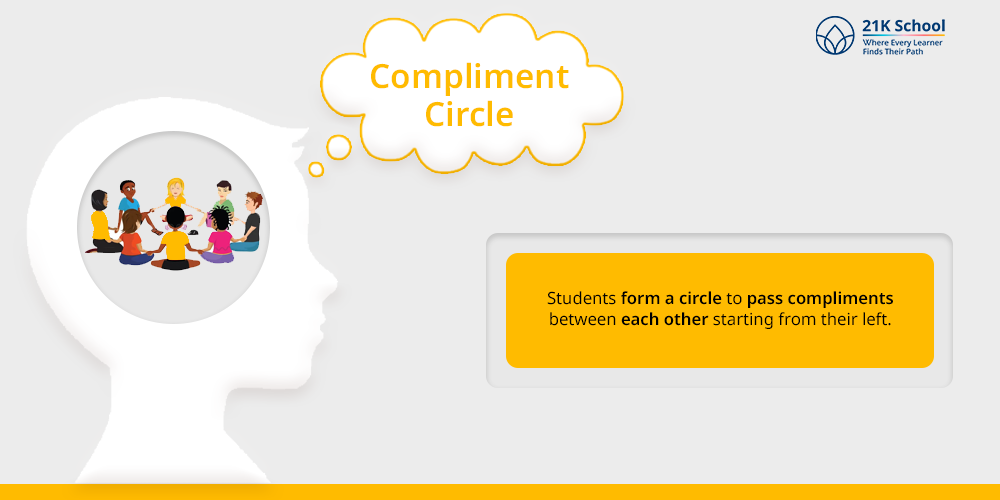
Students form a circle to pass compliments between each other starting from their left.
This practice teaches how to develop empathy and self-esteem because students gain appreciation for pointing out the positives in others.
- Materials Needed: A stuffed toy or a ball to pass among the children.
- How to Do: Students are said to sit forming a circle. The stuffed toy or the ball is passed by each kid at their turns and compliments are given along with each pass.
- Tips: Foster kindness by helping kids to find the positives in each other. Also, making them learn the importance of eye-contact while praising someone.
4. Mindfulness Activities
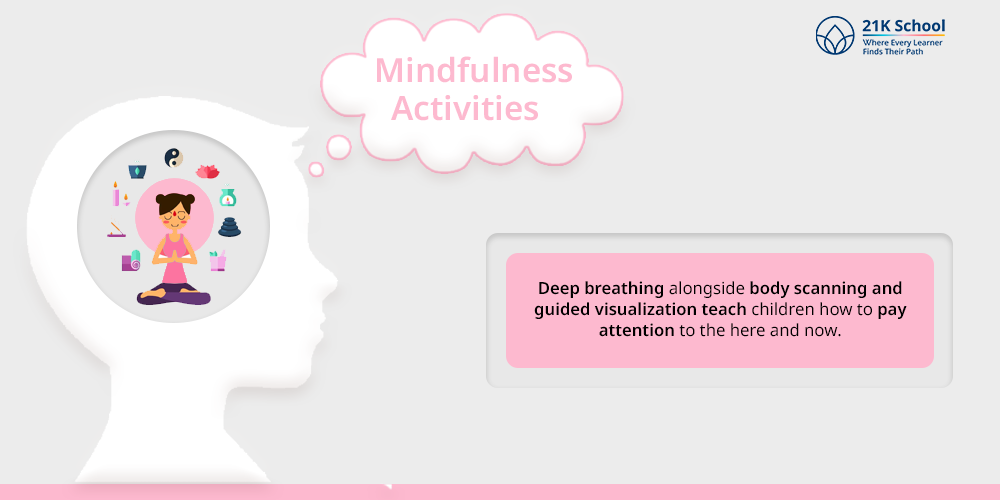
Deep breathing alongside body scanning and guided visualization teach children how to pay attention to the here and now.
Teaching activities which promote emotional control also helps how can students cope with study stress levels.
- Materials Needed: Open space, mats, cushions, calm music, coloring sheets.
- How to Do: Allow students to calm down by simply resting on the mats. Turn on the calming music and teach them breathing exercises. Let them scan their bodies and then cool down.
- Tips: Keep the duration of sessions small so that students don’t lose their patience and follow the procedures. Choose music without lyrics and with low volume.
5. Role-Playing Scenarios
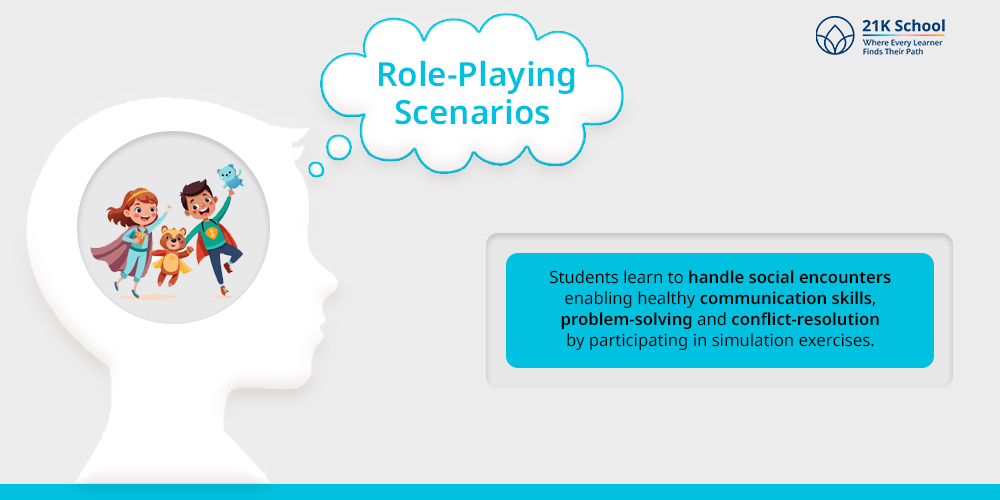
Students learn to handle social encounters enabling healthy communication skills, problem-solving and conflict-resolution by participating in simulation exercises.
Through role-play exercises students learn to handle situations such as preventing bullies and building friendships .
- Materials Needed: Scenario cards (e.g., “Your friend is being bullied” or “You are being scolded for something you haven’t done”)
- How to Do: Students are said to pick a card and then display their reactions to these real-life social-emotional situations through an act. The responses are then discussed while giving suggestions, and appreciated in the classroom settings.
- Tips: These situations can be sensitive for some kids. Try maintaining a healthy, safe and non-judgmental space for them.Switch roles to showcase different perspectives and respect them.
6. Emotion Journals
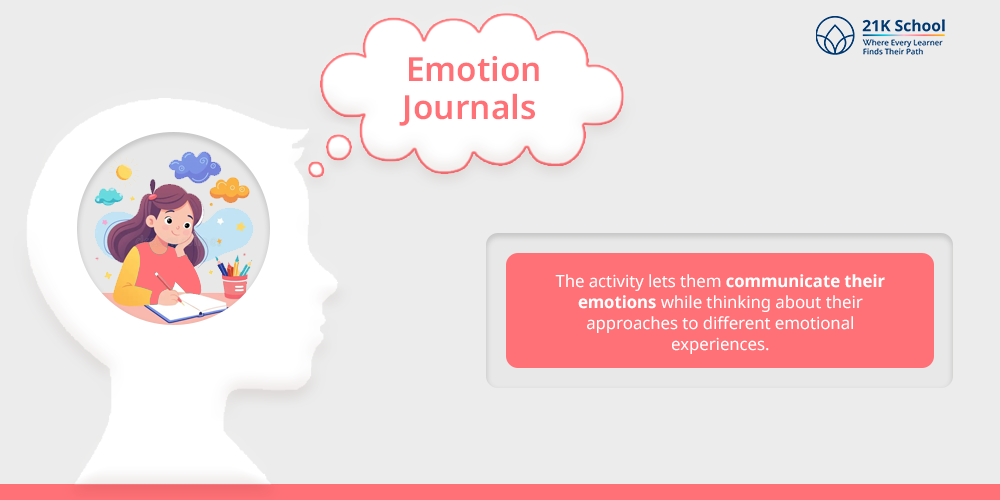
Kids should maintain emotion journals daily through writing or drawing. The activity lets them communicate their emotions while thinking about their approaches to different emotional experiences.
- Materials Needed: Diaries, notebooks, cute and printed journal templates.
- How to Do: After each passing day, children jot down their emotions in their own personal diary or journal throughout the time . They can also use prompts such as “Today my day started with ………”
- Tips: Give space and privacy to kids while journaling and afterwards. Don’t let them feel intruded by peeping into their diaries. If they feel safe enough they will share things on their own.
7. Kindness Challenge
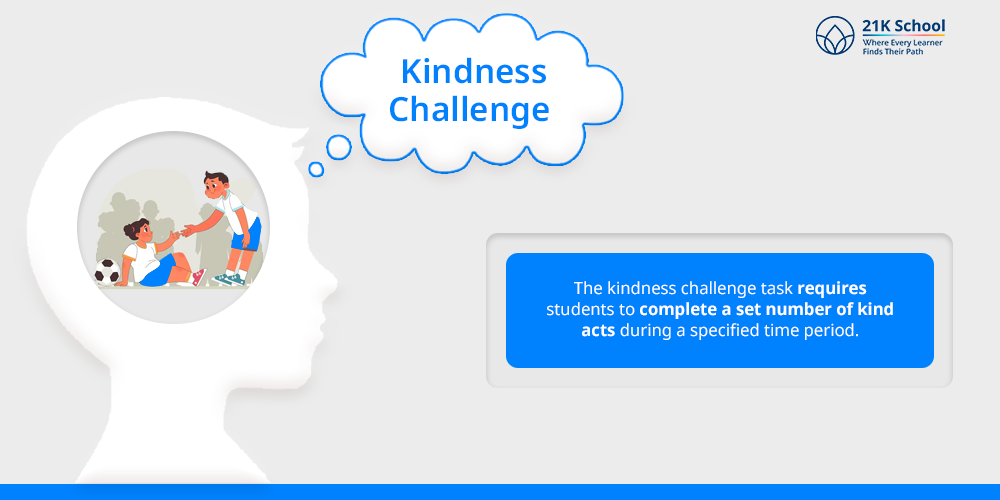
The kindness challenge task requires students to complete a set number of kind acts during a specified time period.
A kindness challenge educates students about important values pertaining to friends and relationships.
- Materials Needed: A sheet of paper or checklist where all the kindness acts are mentioned. Stickers or stamps to put marks on the acts completed.
- How to Do: The kindness checklist should be hung in the classroom where everyone can see it. Students should go through it and at the end of the day mark all their good deeds. Let their progress be registered.
- Tips: Make it a monthly or weekly ritual to offer acts of appreciation. This can be through giving small gifts to the ones with the highest number of kindness acts.
8. Feelings Pictionary
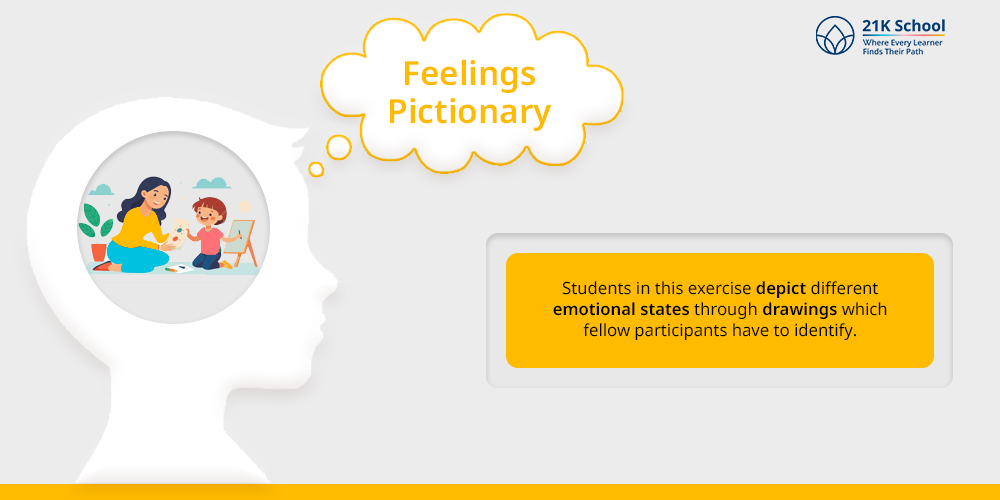
Students in this exercise depict different emotional states through drawings which fellow participants have to identify.
Students experience entertaining learning about emotional awareness through this approach which enhances their creative skills .
- Materials Needed: Cards of emotions, whiteboards, colour pens, markers, and drawing papers.
- How to Do: At first, one student comes up and chooses an emotion card. Then he draws that emotion on the whiteboard or drawing sheet, without writing its name. The other students guess the emotion and the right ones get prizes.
- Tips: Encourage situational clues and facial expressions while the child is drawing. Also, ask students if they have felt anything like that emotion and share the incident with the whole class.
9. Classroom Peace Corner
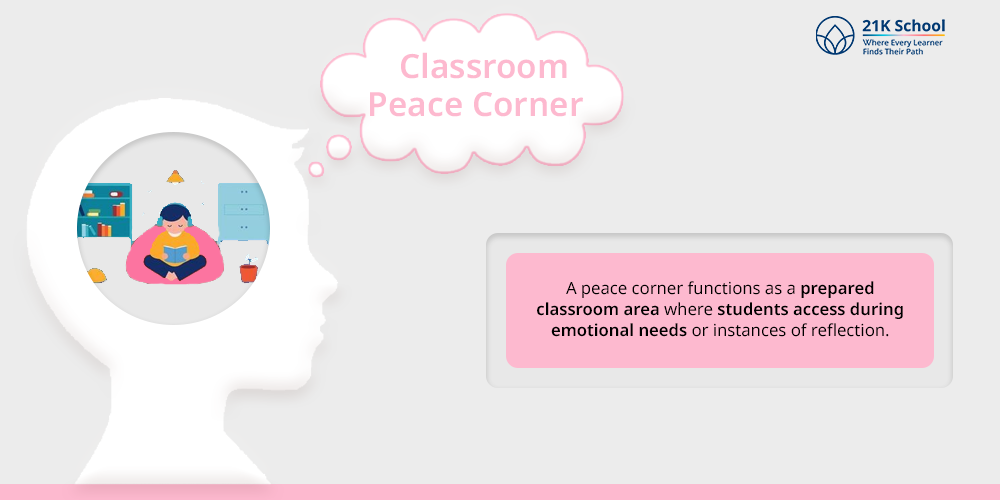
A peace corner functions as a prepared classroom area where students access during emotional needs or instances of reflection.
People can use it as a simple method to develop healthy emotional self-control skills.
- Materials Needed: A class corner with things like pillows, stuffed toys, story books, tissue papers, etc. Posters that can bring calm like scenic wallpapers, etc.
- How to Do: Create a corner in the classroom with above-mentioned things. Play calm music in the background. Teach students how to use that space when overwhelmed.
- Tips: Promote a non-judgemental space for children. Encourage sharing and expression of feelings.
10. The Friendship Tree
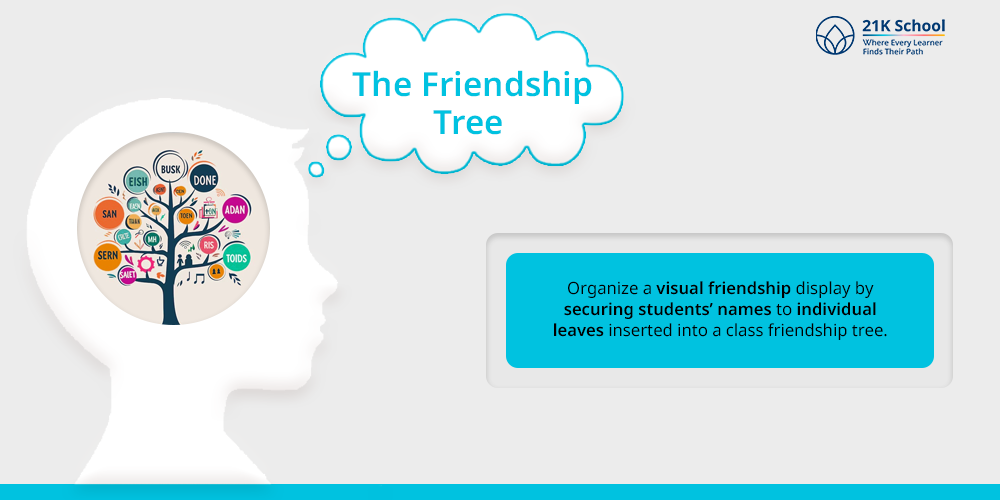
Organize a visual friendship display by securing students’ names to individual leaves inserted into a class friendship tree.
When students build positive relationships through kindness the tree will expand in size.
- Materials Needed: A huge drawing or printed poster of a tree. Paper cut-outs of leaves, pastel colours, markers, etc.
- How to Do: When students make bonds with their fellow mates, they write it on leaves. As the friendship grows, so do the branches and leaves on the tree.
- Tips: Review the friendship leaves weekly and allow decorating them as per the student’s choice.
11. Problem-Solving Scenarios
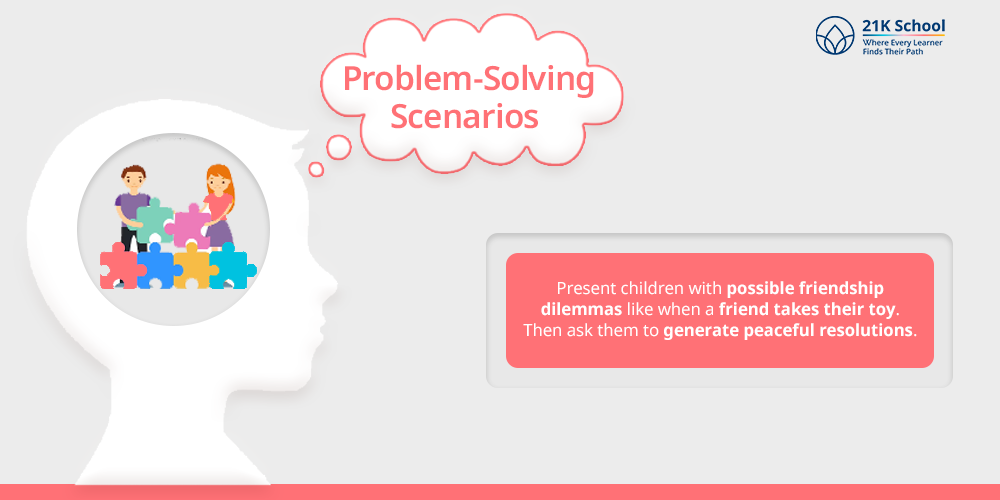
Present children with possible friendship dilemmas like when a friend takes their toy. Then ask them to generate peaceful resolutions.
The process encourages analytical decision-making which students need to address conflicts with efficiency.
- Materials Needed: A bowl, scenario cards, and a whiteboard for discussions.
- How to Do: First of all, pick a card from the bowl, and read the scenario aloud to the class. Ask students the best possible ways to resolve the situation with calmness and empathy. Then the best resolution gets the prize.
- Tips: Encourage everyone’s participation in the discussion. Reinforce positive culture and empathy along the play.
12. Gratitude Journal
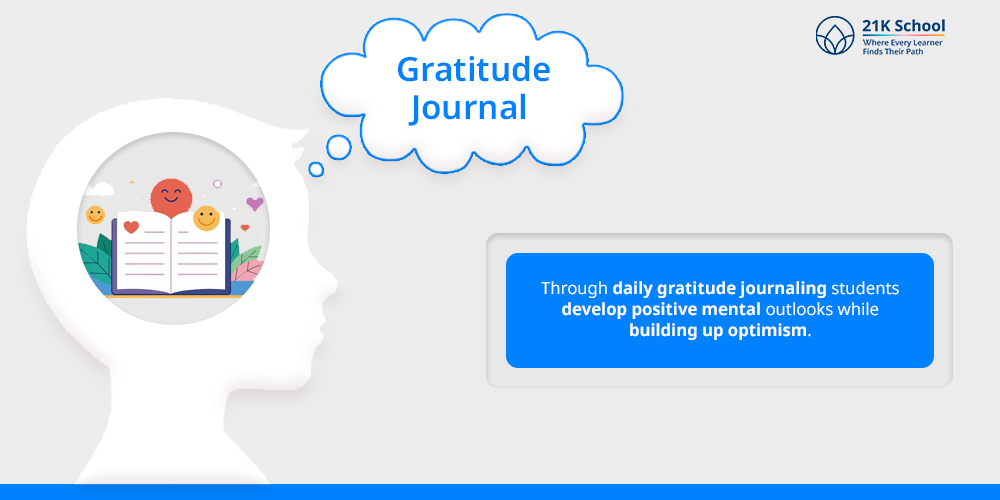
Through daily gratitude journaling students develop positive mental outlooks while building up optimism.
Thanking god for the basic privileges that they have got is a good way to teach them thankfulness.
- Materials Needed: Diaries, personalised journals, or journals with gratitude prompts. Pencils, markers, colours.
- How to Do: At the beginning or at the end of the day, ask students to write 4-5 things they are thankful to god for. Maintain that journal throughout the term.
- Tips: Write things on gratitude that need appreciation in our daily lives like food, water, parents, a healthy body, etc. Also, include gratitude in your own speech.
Read more on: Educational Online Games for Elementary Schools
Virtual Assistance for Educating SEL
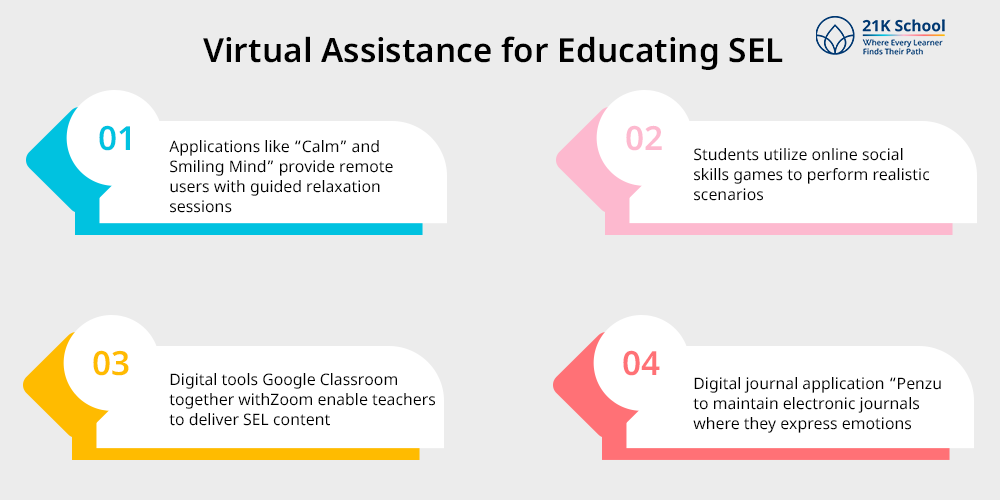
Technology progress in education has made virtual assistance an essential component for teaching social emotional learning.
Students can interact with digital resources and applications that provide both motivational and engaging practices of social emotional capabilities.
SEL receives support from virtual assistance through these operational methods:
- Informative and casual applications like “Calm” and “Smiling Mind” provide remote users with guided relaxation sessions and mindfulness practice.
- Students utilize online social skills games to perform realistic scenarios that help build their skills in responsibility, empathy and communication.
- The digital tools Google Classroom together with Zoom enable teachers to deliver SEL content through virtual classrooms for remote learners.
- Students can use the digital journal application “Penzu” to maintain electronic journals where they express emotions and monitor their continuous development.
A Structured Plan to Establish SEL Successfully In Elementary
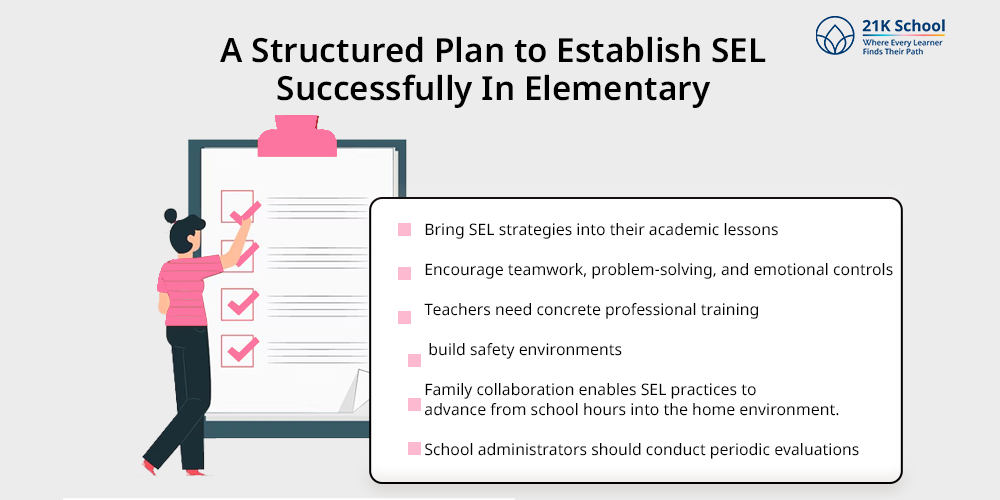
A comprehensive whole-school system must be implemented to successfully incorporate SEL in elementary education. The successful implementation follows these specific steps:
- Teachers need to bring SEL strategies into their academic lessons of language arts and science. These lessons would encourage teamwork, problem-solving, and emotional controls during each day.
- Teachers need concrete professional training which teaches both SEL classroom instruction and self-modeling for students.
- Educational institutions need to build safety environments which allow students to openly express emotions and practice social emotional learning competencies.
- Family collaboration enables SEL practices to advance from school hours into the home environment. Through classroom resources and parental education workshops schools enable parents to develop their SEL abilities at home.
- School administrators should conduct periodic evaluations of student emotional development alongside social growth to verify the achievement of SEL targets.
Key Takeaways
Children require social emotional learning because it develops their full potential particularly during elementary school years. Social emotional learning enables students to manage their feelings and develop empathy.
It assists in strengthening their social bonds between people creating better educational results and emotional contentment.
Educators together with parents possess numerous entertaining activities which they can utilize to teach children about social emotional learning effectively.
Student success in SEL depends on strategic planning alongside teacher and family cooperation with student education.


